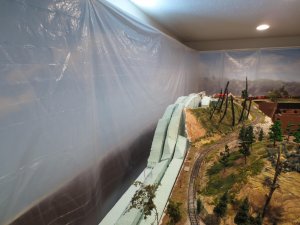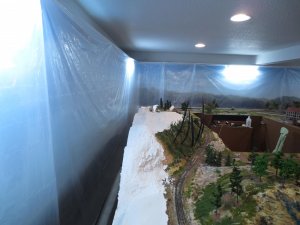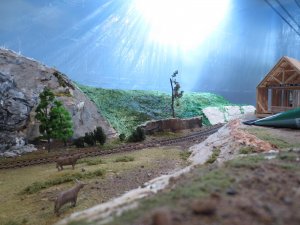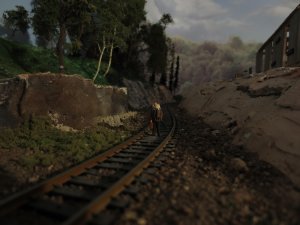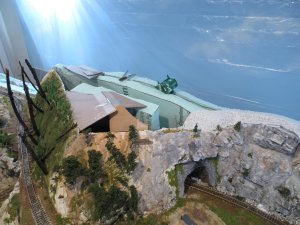Chevron_GATX
Member
I need to craft some rolling hills to model a hilly section of Los Angeles which contains a field of oil derricks. I'm trying to think of a "dry" process which doesn't involve using plasters. My first idea was to construct some kind of framework onto which I could drape Woodland Scenics' vinyl-backed grass mat, which I could heat-gun into the necessary soft contours required. Woodland Scenics' product description says, "[You can] use a heat tool to form a hill, mound or valley . . . " using their grass mat. Not sure if the Walthers' grass mat product is also vinyl-backed and equally as malleable.
I was thinking of using some kind of wire mesh, possibly this "hardware cloth" from Home Depot. Either that, or some tightly patterned fencing material. I once bought some sort of fence material that I used in the backyard that would probably work; it has a grid pattern of approximately 1/3" squares. Ideally, the mesh would be easily formed, yet stiff enough to hold its shape. I would attach the mesh to 3/4" melamine board using counter-sunk wood screws. I also have some dimensional packing cardboard that could also possibly be used as a base. Any other ideas?
I was thinking of using some kind of wire mesh, possibly this "hardware cloth" from Home Depot. Either that, or some tightly patterned fencing material. I once bought some sort of fence material that I used in the backyard that would probably work; it has a grid pattern of approximately 1/3" squares. Ideally, the mesh would be easily formed, yet stiff enough to hold its shape. I would attach the mesh to 3/4" melamine board using counter-sunk wood screws. I also have some dimensional packing cardboard that could also possibly be used as a base. Any other ideas?

